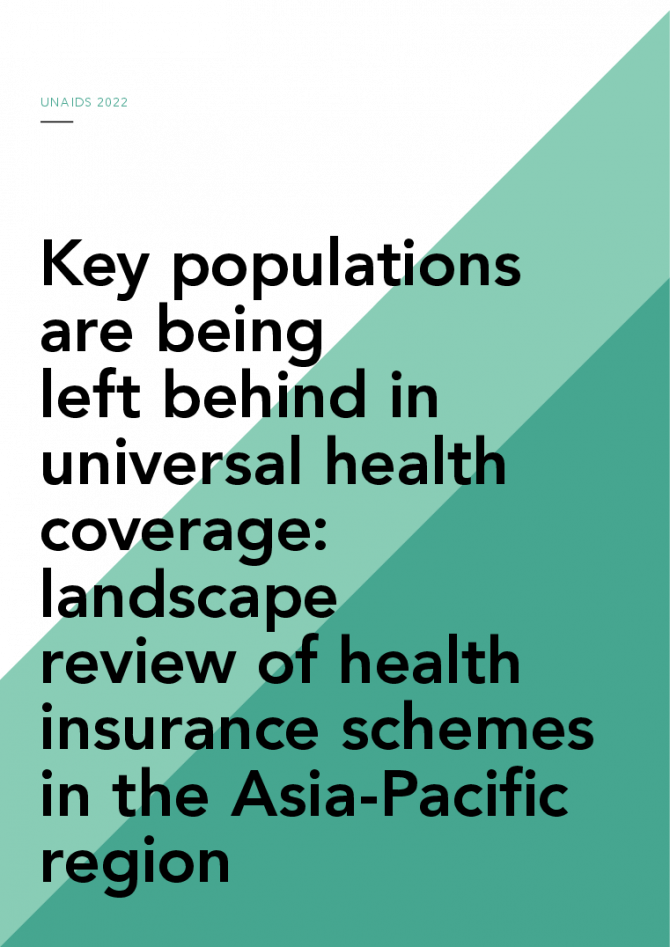Documents
Key populations are being left behind in universal health coverage: landscape review of health insurance schemes in the Asia-Pacific region
28 March 2022
Universal health coverage is guided by the principle that individuals and communities receive the services they need, including essential good-quality health services, without suffering financing hardship. The establishment or expansion of government-sponsored health insurance is often promoted as the main vehicle to finance universal health coverage. For people living with HIV and people from key populations (sex workers, gay men and other men who have sex with men, transgender people, people who inject drugs, people in prison) living with or at risk of HIV, universal health coverage is considered a health-for-all solution for countries to integrate all HIV services, including prevention.

